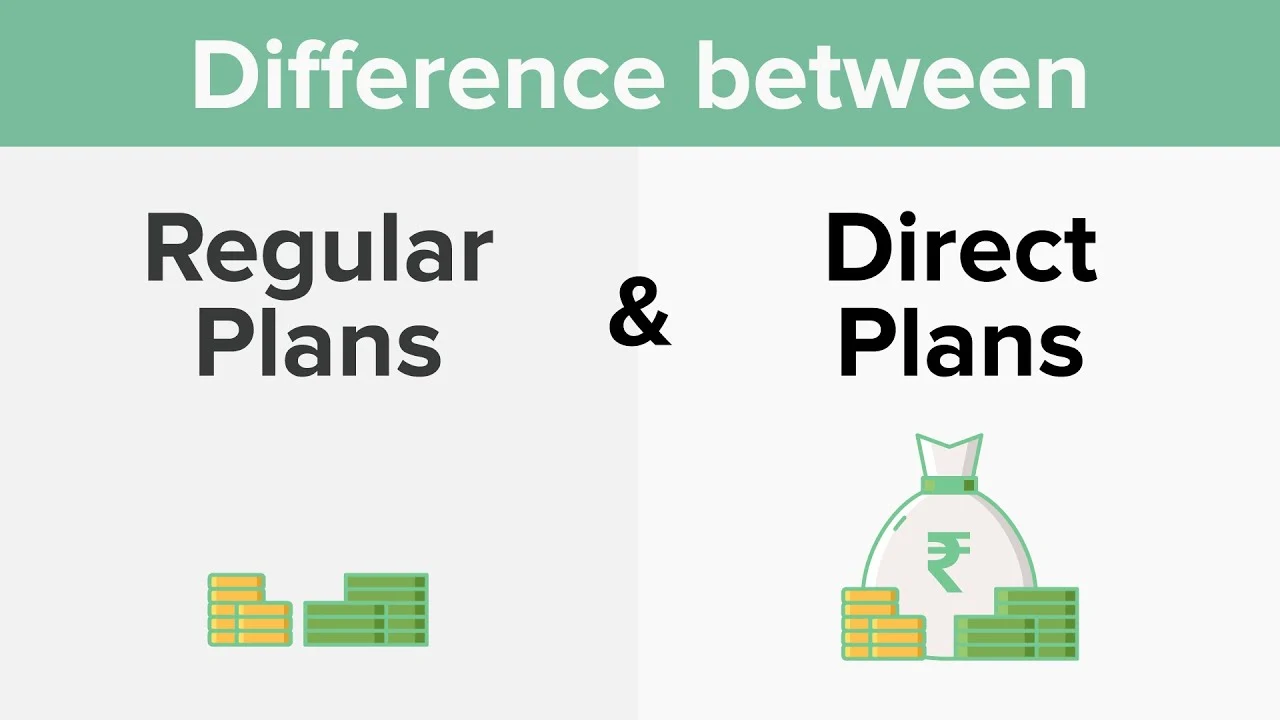You work hard. You save diligently. And when it comes to investing in mutual funds, you trust your bank agent, insurance advisor, or local distributor to guide you.
But what if the person you trust is quietly taking a slice of your returns every single year — not by cheating, but by design?
Welcome to the hidden world of Regular Plans vs. Direct Plans in mutual fund investing.
The Hidden Cost of Convenience
Most first-time investors begin their mutual fund journey through a distributor or bank relationship manager. These intermediaries suggest schemes, fill out forms, and manage paperwork — but they don’t do this for free. They earn a commission from the Asset Management Company (AMC) for every rupee you invest.
These commissions come out of your fund’s expense ratio, which is higher in Regular Plans than in Direct Plans.
Example:
- Regular Plan Expense Ratio: 1.75%
- Direct Plan Expense Ratio: 0.75%
- Difference: 1% every year
Now, this may sound small. But compounded over years and large sums, it eats a massive portion of your final corpus.
How Much Can You Lose?
Let’s assume you invest ₹10 lakh in a mutual fund with a 12% annual return before expenses.
| Plan Type | Expense Ratio | Effective Return | Value After 20 Years |
|---|---|---|---|
| Direct Plan | 0.75% | 11.25% | ₹82.3 lakh |
| Regular Plan | 1.75% | 10.25% | ₹66.0 lakh |
You lose over ₹16 lakh just in commissions — without your advisor ever telling you.
🕵️♂️ Why Don’t Advisors Promote Direct Plans?
Because they don’t earn from it. It’s that simple.
- Agents and relationship managers make money only when you choose Regular Plans.
- AMCs build in these commissions to compensate distributors.
- Most investors are unaware there’s even a “direct” option available.
In fact, a 2023 SEBI study found over 70% of investors in Tier 2 and Tier 3 cities invest in Regular Plans, largely due to lack of awareness.
What Are Direct Plans?
Direct Plans are mutual fund schemes you invest in without any intermediary. You invest directly through the AMC’s website or a platform like Zerodha Coin, Groww, Paytm Money, or Kuvera.
These platforms charge zero commission, and because no middleman is involved, the expense ratio is lower, and your returns are higher.
Benefits of Direct Plans:
- Higher Returns: Lower expense ratio means more compounding power.
- Transparent Tracking: You see exactly what you’re paying for.
- Better Control: You choose funds based on data, not sales pitch.
Even Small SIPs Are Affected
Let’s say you’re doing a modest ₹5,000 monthly SIP for 25 years.
| Plan Type | Return (%) | Final Corpus |
|---|---|---|
| Regular Plan | 10% | ₹66 lakh |
| Direct Plan | 11% | ₹82 lakh |
That’s a ₹16 lakh difference on a relatively small monthly investment!
Why Do Some Still Prefer Regular Plans?
- Hand-holding: First-time investors feel more comfortable with someone managing things.
- Lack of awareness: Many simply don’t know the difference exists.
- Tech aversion: Some aren’t comfortable using digital platforms.
But today, investing in Direct Plans is easier than ever. Even platforms like Zerodha Coin, Groww, and Kuvera are beginner-friendly, with step-by-step onboarding.
So, What Should You Do?
- Check your current investments – Are you in Regular or Direct?
- Use platforms like Value Research or Morningstar to compare expense ratios.
- Switch to Direct Plans for long-term investments — especially for equity mutual funds.
- Educate your family and friends. Spread awareness about how fees silently erode wealth.
Quick Tip: How to Know If You’re in a Regular Plan Already
- Check your portfolio on CAMS or Karvy portal
- If it says “Regular” next to fund name – it’s costing you extra
- Consider switching to Direct via same platform or start fresh in Direct with a new folio
Key Takeaways
- The 1% difference in expense ratios can lead to ₹15–20 lakh losses over the long term.
- Direct Plans offer the same funds and fund managers — just with lower costs.
- Most investors unknowingly choose Regular Plans, thinking it’s the only way.
- Switching to Direct Plans is now safe, easy, and legal.
- Start with one fund, compare both versions, and feel the difference in returns.




